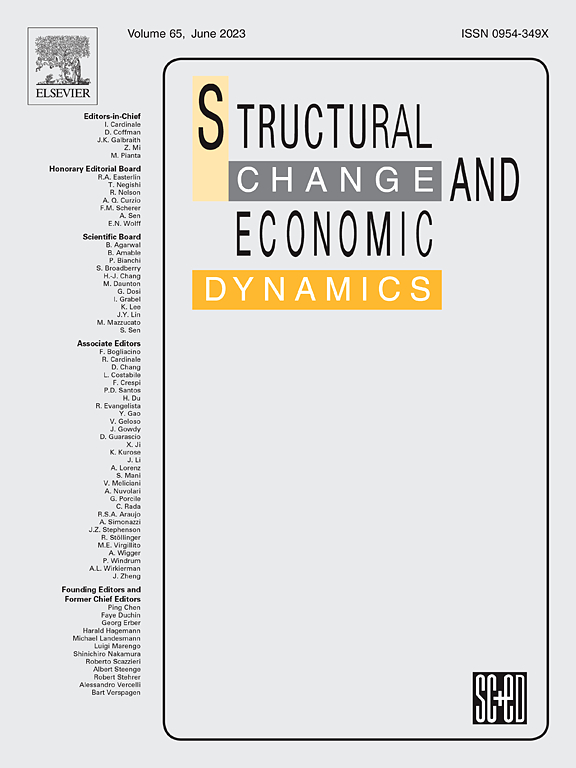Network spillover effects and path analysis of shocks - An empirical study in China
IF 5
2区 经济学
Q1 ECONOMICS
引用次数: 0
Abstract
The study of interconnections between various sectors of the national economy is crucial for understanding the pattern and pace of macroeconomic growth. This paper analyzes the macroeconomic impact of shocks occurring in specific sectors through both supply and demand perspectives and proposes a combination of bottom-up and top-down structural path analysis approaches to trace the transmission path of network spillover effects, where shocks in this paper refer to microeconomic productivity changes and network spillover is defined as the effect on GDP due to the propagation of shocks to other sectors. The research results found that the total spillover effect of primary and secondary industry sectors in China shows an inverted U-shape, and the total spillover effect of tertiary industry sectors shows an upward trend. A large total spillover effect of a sector does not mean that both upward and downward spillover effects are large; for example, the construction industry has high upward spillover effects and low downward spillover effects. The spillover effect of each production layer decreases as the path lengthens, and the distribution is L-shaped. In addition, by identifying the critical paths of spillover effects, we find that the spillover effects of labor-intensive industries, such as wholesale and retail, are decreasing year by year, and the spillover effects of the paths related to the information technology industry are gradually occupying an important position.
网络溢出效应与冲击路径分析——中国的实证研究
研究国民经济各部门之间的相互联系对于理解宏观经济增长的模式和速度至关重要。本文从供给和需求两个角度分析冲击对特定部门的宏观经济影响,并提出自下而上和自上而下相结合的结构路径分析方法来追踪网络溢出效应的传导路径,其中冲击是指微观经济生产率的变化,网络溢出定义为冲击传播到其他部门对GDP的影响。研究结果发现,中国第一、第二产业部门的总溢出效应呈倒u型,第三产业部门的总溢出效应呈上升趋势。一个部门的总溢出效应大,并不意味着向上和向下的溢出效应都大;例如,建筑业具有较高的向上溢出效应和较低的向下溢出效应。各生产层的溢出效应随路径延长而减小,呈l型分布。此外,通过对溢出效应关键路径的识别,我们发现批发、零售等劳动密集型产业的溢出效应呈逐年下降趋势,与信息技术产业相关的路径溢出效应逐渐占据重要地位。
本文章由计算机程序翻译,如有差异,请以英文原文为准。
求助全文
约1分钟内获得全文
求助全文
来源期刊

Structural Change and Economic Dynamics
ECONOMICS-
CiteScore
9.60
自引率
4.90%
发文量
159
期刊介绍:
Structural Change and Economic Dynamics publishes articles about theoretical, applied and methodological aspects of structural change in economic systems. The journal publishes work analysing dynamics and structural breaks in economic, technological, behavioural and institutional patterns.
 求助内容:
求助内容: 应助结果提醒方式:
应助结果提醒方式:


